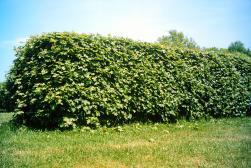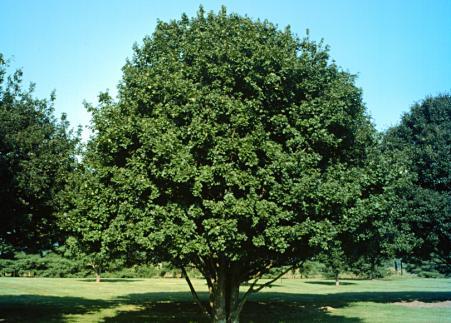June 27, 2013
| Acer campestre Hedge maple
|
| Description | Long grown in North America, the hedge maple is a widely adaptable, trouble-free small tree for smaller urban spaces. It has a lovely texture from its rounded, lobed leaves and grows well in tough urban sites. Bright yellow fall colour and prunability place this tree on the list of trees to choose. |
| Usage | Tall hedge, parking lot island, buffer strip, patio, shade tree, specimen, sidewalk; settings away from natural areas |
| Origin | Europe, Africa |
| Hardiness zone | 5 |
| Size | 7-12m |
| Form/texture | Rounded with low branching creating short trunk Slender branches, often with corky fissures, give a medium to fine texture |
| Growth rate | Slow; moderate lifespan |
| Leaf | Opposite, simple, lobed dark green with yellow fall colour |
| Flower | Green, inconspicuous |
| Fruit | Samara, plentiful |
| Exposure/culture | Full sun to part shade All soil textures, pH adaptable Moderate salt tolerance Extremely drought tolerant Easily transplanted Tolerates tight pruning Pest resistant, though tar spot and verticillium wilt do occur |
| Comments | Adaptable to fairly tough sites, this species has some potential for more use in urban areas. "Probably the best maple for dry, alkaline soils" (Dirr). The dark-green leaves have rounded lobes and are smaller than the other, more commonly grown maple species in Ontario. While ultimately not a tall tree, hedge maple does eventually develop a fairly wide crown, which at low heights will limit it as a street tree in some situations. Maple tar spot infection is not currently as severe as seen on Norway maple (Acer platanoides). The plentiful seeds germinate easily; caution near natural areas as it is now listed as invasive in Ohio (www.invasiveplantatlas.org/trees.html). |


|
Reference: Dirr, M. 1998. Manual of Woody Landscape Plants. Stipes Publishing, Champaign, Illinois 1187 pp. |
